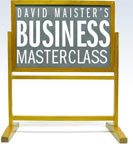

TITLE | TIME |
Competing through Organizational Functioning | (20:26) |
Modern organizations often have complex structures with departments, industry teams, major account teams and geographic locations. How does a company ensure that these overlapping structures function smoothly together?
RELATED RESOURCES:
NOTES FOR THE EPISODE:
Timeline:
00:39 —
When one reviews the topics we have covered in this podcast series — values, collaboration, being a one firm firm, achieiving success not be having better ideas than the next person but by operating across the firm with greater diligence and consistency, it might reasonably be said that, in professional businesses, the organization IS the strategy. If it functions smoothly, the firm will excel. If it creates barriers, the firm will stumble continually.
04:01 —
All of this has introduced some novel questions into the firm management discussions we now hear in boardrooms across the country:
- How are critical and limited resources best distributed among (competing) groups and new initiatives?
- Do we organize groups around all of the industries we serve or only a few select industries?
- What guidelines exist for how to handle those of our clients that fall into more than one group?
- How do we compile and share best practices between and amongst the professionals in all of the various groups?
- How do our firm’s support professionals divide their time effectively amongst the various groups in order to provide the required assistance?
We certainly would not profess to have answers to these complex issues that would fit every firm’s situation. However, we believe that there are five perspectives that must guide any review of a firm’s structure.
05:15 —
Imperative 1: Examine Structure, Process and People
05:59 —
Imperative 2: Recognize shifting priorities in structural design
08:41 —
Imperative 3: Establish Mandates for Each Group
12:49 —
Imperative 4: Clarify Agreements Within the Groups:
14:26 —
Imperative 5: Choose the Right Group Leaders

















